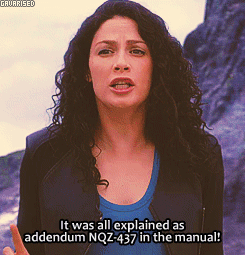And we’re back! I guess that’s a royal “we,” since there’s only me typing here. Last week I shared a few quick thoughts on single and sandwich drafting. Today, I want to dive into two others: multi and confetti. I know what you’re probably thinking: “Who is this guy?” That question is better answered on the main page or in the “Introductions…” post. If you’re wondering what confetti drafting is, good. It’s weird. We’ll talk about it in a bit. But first:
Multi Drafting
On the other side of the spectrum from single drafters, we have those who generally craft several drafts of a thing before they consider it ready for editing. For these folks, the growth of ideas, flow, and structure often develop through each subsequent draft rather than before drafting begins. I consider this practice just as venerable as single drafting, though it does have its own flaw. If single drafting can facilitate people who want to skip steps and just throw their “final” writing out into the world, multi drafting does the opposite. For those prone to procrastination or perfectionism, multi drafting can become an Escher Vault of endless versions that never culminate in an outside editorial because it’s “not quite right.”

At some point, if your goal is to share your writing with others, you have to share it with others. Even if you feel it isn’t perfect. I’ve known a few multi drafters that would cycle endlessly, lost in self-doubt that the work isn’t good enough. Honestly, even if it really isn’t, sometimes it takes an outside perspective to help you see what’s missing. Endlessly iterating on the same thing forever isn’t a good plan. That way lies madness.
TL;DR – Multi drafting involves building ideas, concepts, and styles through iterative drafts of the same content. It is not an excuse, however, to avoid showing your work to anyone else because it “isn’t there yet.”
Confetti Drafting
Finally, the much alluded to confetti drafting. I’ve only met one person that did this, and I cannot attest to its effectiveness in any way shape or form. Evidently, this type of drafter writes independent sentences, paragraphs, or ideas without any order or form. They just plop it onto the page as it occurs to them. Once they feel that they’ve written enough of those, they simply drag and drop them into an order, adding transitions where necessary. It seems akin to an index card outlining methodology if one applied a little extra chaos to it.

I don’t get this one at all. It is anathema to my single drafter brain. I have no idea how it would work well, and I can definitely see places where it would get weird. That said, I am sure that it works for some people. I just am not one of them!
If you do this, please tell me about your process. I really, really want to know. Like really. This is a mystery to me.

Tl;DR – ?????????
Conclusion
There are many more forms of drafting than the 4 I’ve discussed in the last two posts. Honestly, I believe they all can work when executed well and all can fail when executed poorly. I recommend finding others that draft like you to learn from their habits and best practices. Then, find folks who draft differently and learn from theirs. Your goal shouldn’t be to draft like everyone else, but to fine tune your practices until they are as refined as your manuscripts/papers/poems/messages in a bottle.
The only bad kind of drafter is one who refuses to learn.
In the comments, let me know what kind of drafter you are, what styles you’ve run into aside from the above, or if you like Warehouse 13. That last one is just because I like talking to people about that awesome show. Or tweet that stuff at me.
For more content on this site, you can visit the main page HERE.
Thanks for reading!